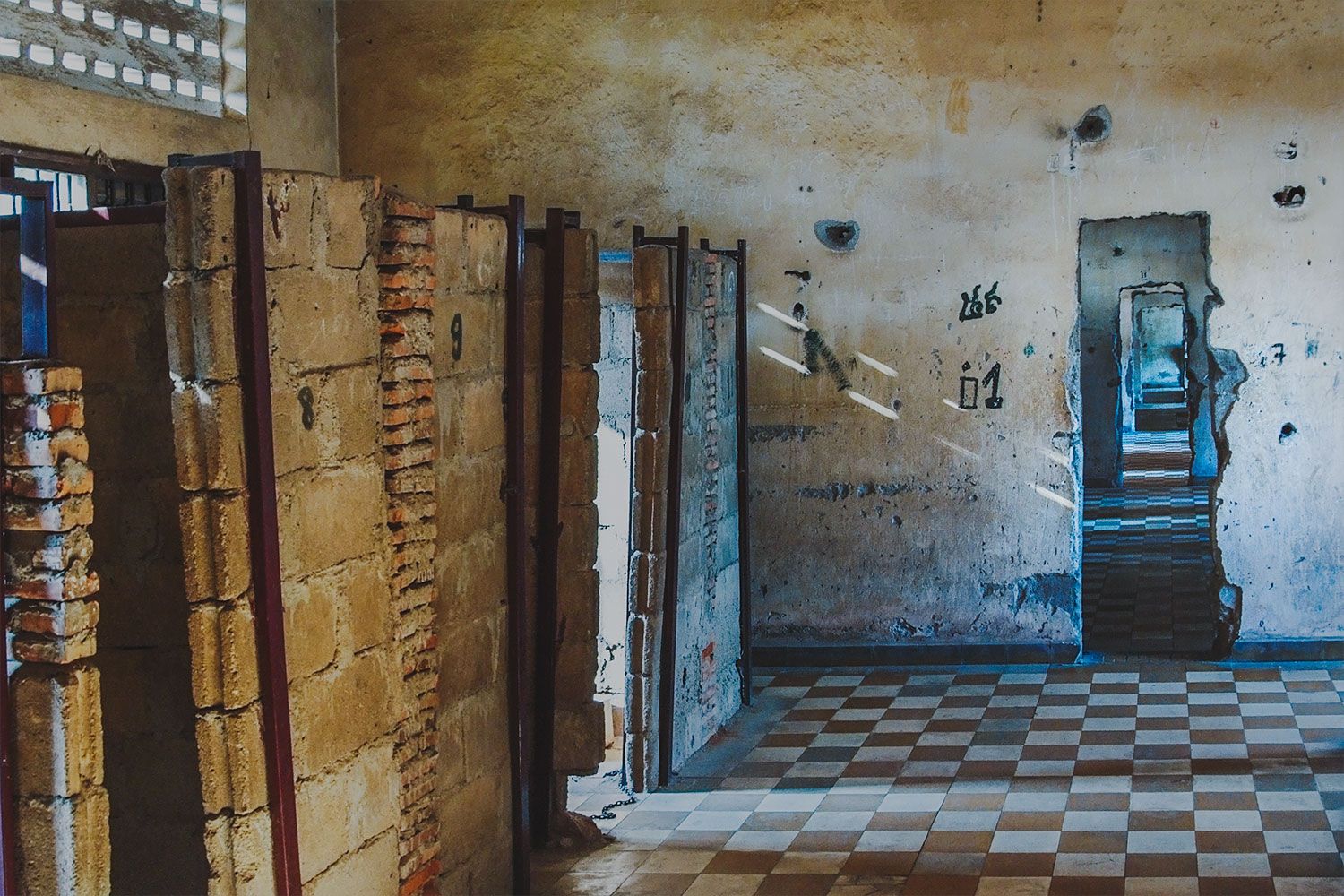Tuol Sleng, Duch, and Hell on Earth
Duch ran the prison, oversaw the torture, and, soon as he had a "confession," certified the dispatch of his prisoners to the "killing fields" out of town.

It was not a long walk from my hotel at the waterfront to Tuol Sleng; the foul smell from the sewers accompanied me the entire length, riding atop the acrid air of Phnom Penh.
I recognised the buildings when they came up; I'd even anticipated the barbed wire, having read about it. Tuol Sleng was built to serve as a school no different in appearance that those that missionaries have established across Asia. This one has four buildings, each with two stories on top of a ground floor, and two generous quadrangles for play and for assembly, and quite airy classrooms.
New villas fronted the school; apartments blocks flanked it on the sides. On every floor, homes out there were level with the classrooms. I saw through the classroom windows clothes hung to dry, children at play, a housewife washing food in the balcony, and other sundries of family. A villa on the corner in front belongs to the America Friends Service Committee. Villas next to it are taken by other NGOs bearing names such as Village Works. The tea shop before the gates of this school-turned-torture-centre-turned-museum is for tourists.
When the Khmer Rouge turned the school into a prison, they began their interrogations in the surrounding buildings. But there they took to rape to such an excess that Comrade Duch consolidated all operations into the school. Duch ran the prison, oversaw all the torture that happened there, and, soon as he had a "confession," certified the dispatch of his prisoners to the "killing fields" out of town. He baulked at rape, for some reason.
Pictures on the walls showed the state of the victims at the end of a "session." Senior leaders decreed as traitors were given a whole classroom each, and a metal cot to which they were shackled in irons. A small ordnance-can by the cot served as toilet. Lesser captives were made to build their own tiny cells in the classrooms — sloppy concreting, rough brickwork, skewed walls attest to the lay work of the unskilled. Pictures of captives are on display in some classrooms. Too many of them are of children, the terror is stark in their black eyes.
Sketches on the walls showed how the ingenious torture devices worked. Seeing them, I didn't recoil; the images wouldn't evoke the state of those who lost hope in this hell on earth, and perhaps prayed for urgent death. Instead, a dullness came over me, a numbing of the mind, and I went out and sat on a bench in the playground and watched sparrows playing. Young Buddhist monks sat on the next bench; French and American tourists had arrived in buses. Guides in browns were herding them. Khmer elders stood outside and waited for their young to finish the tour. A sombre silence sat heavy on the place, and I wondered how this horrendous relic of the recent past appeared to families that lived in the buildings around.
I took comfort in water from a pet bottle, and the flutter of the occasional sparrow flying close, beating fast its wings.
